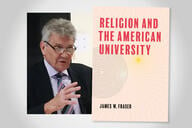You have /5 articles left.
Sign up for a free account or log in.

BernardaSv/istock/getty images plus
As hiring season comes upon us again, a rising tide of faculty opinion suggests that the venerable system of using recommendation letters needs to be discarded. Critics—in meetings, on Twitter, in print—forcefully argue, with some research behind them, that such letters are biased, unstandardized and unnecessary. They say that letters only add to student anxiety, faculty workload and administrative paperwork, all to no good purpose.
I disagree. In fact, I’ve always found recommendation letters to be the single most helpful source of information that search committees collect. When read carefully, usually in clusters of three, letters can describe a candidate’s consistent strengths and weaknesses, their teaching style and effectiveness, their resilience and flexibility, and their suitability as colleagues. Only once, in scores of searches leading to dozens of hires over my 40-year career, did I feel that I’d been misled by letters—and those letters were all written by people I didn’t know, even by reputation. I should have checked more carefully.
The most common criticism of recommendation letters is that they reflect gender bias. Some solid research suggests that letters tend to undersell women, describing them in more personal, less intellectual terms than men (although more recent studies challenge that finding.) The good news is that we now understand the bias possibility and can spot it and compensate for it. Numerous university webpages and annual campus workshops are devoted to expunging, or at least offsetting, the widespread tendency for letter writers—i.e., people like us—to gender our descriptions of our colleagues and students, and to recognize it when it occurs. The problem is not insurmountable.
And let’s be honest: other application materials are biased, too. I’ll admit that I’ve often used graduate school prestige as a proxy for candidates’ intellectual horsepower. That measure clearly favors undergraduates who were spotted early by savvy mentors, students with highly educated parents who understand the system and those who’ve been willing and able to move locations for graduate school. Many of my colleagues rely heavily on cover letters, diversity statements and teaching philosophy statements—that is, on self-promotional materials that candidates provide. Such documents favor confident, smooth-talking applicants who never suffered impostor syndrome and have mastered the art of the humble brag. (Could there be any gender inflection there?)
And I find teaching philosophy statements not just biased but irrelevant: plenty of articulate, thoughtful aspirants to teaching jobs can’t actually manage a classroom or excite their students. After all, you’d never hire a major league pitcher to write a nice essay on throwing the hanging curveball.
What about teaching evaluations? Feel free to ask for them, but understand that many candidates send only the good ones, not the flops. And if you’re hiring for a liberal arts college, you’ll be baffled by the voluminous, overquantified reports coming from huge research universities, completed by undergraduates very different from your own. Certainly, publications and conference papers are more direct indicators of professional ability, but I can name for you graduate departments in my discipline that offer entire courses devoted to getting grad students a couple of publications. Programs without those courses are clearly disadvantaged. Bias again.
I suppose that in hiring for scholarship, you just could read applicants’ work yourself, but who will actually slog through writing samples submitted by 300 applicants? Really?
My point is that every data source has its weaknesses. And the bias in recommendation letters is at least widely acknowledged and perhaps therefore manageable.
Another common objection, of course, to recommendation letters specifically is that, lacking standard rubrics, they are hard to interpret. I’ve heard the chair of a literature department, a brilliant scholar who spends her days helping students to understand the nuances of language, claim that she “can’t tell the difference” between letters describing various job candidates. Similar claims, made without irony, come from social scientists whose professional reputations rest on their subtle analyses of interview transcripts or historical documents. Are letters written by their professional peers beyond interpretation?
Read closely, I think, letters can add a lot: real portraits of a personality, not just a checklist of adjectives; the nuances of a teaching style; even, especially when remarked by three different writers, some evidence of strength of character, which does indeed matter. My first department chair used to inquire about candidates, “Is this person a good human being?” When young, I thought it was an irrelevant question. I soon learned that it’s not. A full set of letters can give at least strong hints.
If we used only letters to evaluate candidates, maybe the objections would be decisive. But, in fact, search committees have CVs, graduate transcripts, cover letters and writing samples, as well as some knowledge perhaps of the recommendation writers themselves. (After a few searches, you start learning that certain advisers rave too often.) Multiple data sources, each with its own peculiar strengths and weakness, can be triangulated and synthesized to discover a candidate’s suitability. It’s not impossible. It’s pretty much what scholars do for a living.
Let’s not discount or discard reference letters. Let’s apply our skills to searches as well as scholarship.




